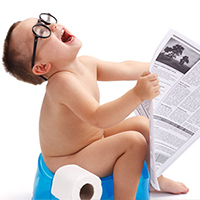 Of all the things parents have to deal with, a sick child is probably one of the worst. This is especially true when they have pain and you can;t do much to make it better. Luckily with DMannose, there is something you can do about it...
Of all the things parents have to deal with, a sick child is probably one of the worst. This is especially true when they have pain and you can;t do much to make it better. Luckily with DMannose, there is something you can do about it...
What is a bladder infection?
The urinary tract is the body's drainage system for removing wastes and extra water. The urinary tract includes two kidneys, two ureters, a bladder and a urethra. When the infection occurs in the bladder, it is called a bladder infection or cystitis. Infections are caused by microbes- organisms too small to be seen without a microscope - including fungi, viruses, and bacteria.
Normally, bacteria that enter the urinary tract are rapidly removed by the body before they cause symptoms. However, sometimes bacteria overcome the body's natural defences and cause infection. In more than 85% of the time, the E.coli bacteria is responsible for a bladder infection.
How common are urinary tract infections in children?
Bladder infections in children are less common than they are in adults (particularly adult women). Around 11% of girls and 4% of boys will have a Urinary tract infection before their 16 th birthday. These infections are generally more common in girls, except during the first six months of a baby's life when boys are more susceptible to the infection.
Most of the UTIs that occur during childhood are located in the lower part of the urinary tract, typically in the bladder. Only 3% of young girls, and 1% of young boys, develop an upper urinary tract infection, which involves the kidneys etc.
What are the symptoms of a bladder infection or UTI?
Babies and young children may not have the most common symptoms, such as pain or burning when they urinate. Also, they can't tell you what they feel. In a baby or a young child, look for:
- A fever not caused by the flu or another known illness.
- Urine that has a strange smell.
- The child not being hungry.
- Vomiting.
- The child acting fussy.
Older children are more likely to have common symptoms, such as:
- Needing to urinate often.
- Loss of bladder control.
- Red, pink, cloudy, or foul-smelling urine.
- Pain in the back on one side (flank pain) or lower belly pain.
- Pain or burning when they urinate.
How is a urine infection confirmed?
A sample of urine is needed to confirm the diagnosis. Urine normally has no bacteria present, or only very little. A urine infection can be confirmed by urine tests that detect bacteria and/or the effects of infection in the urine. Ideally, the sample of urine should not come into contact with skin or other materials that may contaminate it with other bacteria. Adults and older children can do this by a mid-stream collection of urine. This is not easy to do in young children and babies. The following are ways to get a sample of urine that is not contaminated:
Young children - the usual way is to catch some urine in the specimen bottle whilst they are passing urine. Just be ready with the open bottle as the child passes urine. (Be careful not to touch the open rim of the bottle with your fingers as this may contaminate the specimen with bacteria from your fingers.)
Babies - one method is to place a specially designed absorbent pad in a nappy (supplied by a doctor). Urine is sucked into a syringe from the wet pad. Another method is to use a plastic bag that sticks on to the skin and collects urine. If no pad or plastic bag is available, the following might work. Take the nappy off about one hour after a feed. Tap gently with a finger (about once a second) just above the pubic bone. (This is the bone at the bottom of the stomach above the genitals.) Have the open bottle ready as quite often, within about five minutes, the baby will pass urine. Try to catch some in the bottle.
If you collect a sample at home, take it to the doctor or clinic as soon as possible after collection. If there is a delay, store the urine sample in the fridge.
General tips following a urine infection in a child to help to prevent a further infection in the future:
- Try not to let your child become constipated. A good diet will help here. Ask your doctor for advice on this if you are not sure as to what foods are best to prevent constipation.
- Make sure your child has plenty to drink each day.
- Also, see a doctor promptly if you suspect your child has another urine infection. If this is confirmed, remind your doctor that your child has had a previous urine infection. Further tests may be advised.
